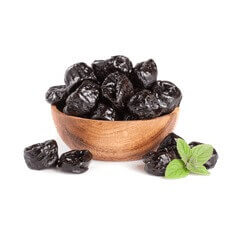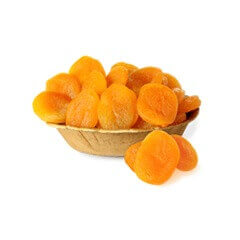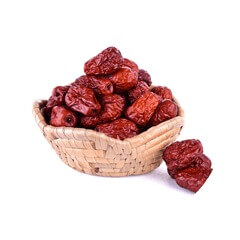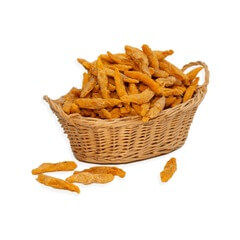Rice is embedded in the cultural heritage of many societies. It is the staple food for half of the world’s population. Continue reading the article to discover some key information about this great starchy food.
Genus and Species of Rice
Rice refers to all the plants of the genus Oryza, including two species that are cultivated (out of the 23 Oryza that exist):
- Cultivated Asian rice (Oryza sativa) falls into two eco-geographical groups: Indica and japonica; rices with the older denomination javanica are attached to japonica;
- There is also Oryza glaberrima, or West African rice, from West Africa.
Some numbers on rice
- 90% of the diet is based on rice in Asia.
- 93% of rice production is Asian.
- We consume 70 kg of rice per person per year in developing countries and 12 kg in developed countries.
- 3,000 to 10,000 litres of water are needed to produce 1 kg of rice.
- For 100 kg of raw rice, we have 60 kg of white rice, 20 kg of husks, 10 kg of bran and 10 kg of broken rice.
- Brown rice contains 76% of carbohydrates and 10% protein.
Rice, the Second Most Cultivated Food Grain in the World
In Asia, more than two billion people get 60-70% of their energy intake from rice. In Africa, it represents a rapidly growing food source and is of vital importance for food security in many low-income, food-deficit countries. After wheat, rice is the cereal most cultivated food in the world.
Now we will see the origin and cultivation of rice, its phenology, and the impact of the environment on the composition of staple food for half of the world’s population.
Origin of rice and history: where does rice come from?
Rice is a food that is usually found on our plates and is an essential part of our meals. And so much the better, because its advantages are countless! There are different types of rice: Camargue rice, basmati rice, white rice, glutinous rice, red rice, and brown rice.
Where does rice come from? Of Asia, certainly, but still? What exactly is the origin of rice? This plant has played a key role in the development of certain civilizations. Discover its history without further delay.
Thousands of years ago, people from Asia settled in the deltas and domesticated rice.
Rice in Asia
Productivity has favoured population growth and allowed the development of civilizations as well as cooperation. The unifying force of rice is particularly visible in the Mekong Delta in southern Vietnam. Water needs have shaped landscapes and culture.
The curves of the rice fields in terraces, which seem to stretch endlessly, enhance the beauty of many Asian landscapes, so much so that the terraces of Banaue, in the Philippines, are listed as a UNESCO World Cultural Heritage Site.
From Poaceae, rice and wheat occupy the most important place for human consumption. Archaeological traces of the use of rice date back to China 9,000 years ago and are found in Korea, India, Thailand, etc.
In the 20th century, Shigemoto Kato described the existence of two subspecies: Oryza sativa japonica and Oryza sativa indica, which the Chinese recognized in the “Keng” and “Hsien” types.
Rice, Its Origin and Evolution
The genome of rice was sequenced, and DNA analysis made it possible to establish the phylogenetic tree rice from its common ancestor, with an evolution scenario that takes into account the tectonic plates and environmental changes.
Rice Phylogeny
The origin of the genus Oryza is in Eurasia 50 Ma ago, but its ancestor came from Africa: the weak divergences imply a recent transport (human travels); the strongest divergences reflect ancient transport linked to animal migrations, and then, the paleodistribution becomes coherent. Animals transport seeds, defecate and trample the soil: three contributing factors! Then domestication extended travel.
Southeast Asia is a refuge for Oryza species adapted to moist forests; Asia, drier, is one for the light rice, particularly the coarse-grained annual forms.
Rice and vegetables are currently found all over the world, for example:
- Cajun cuisine in Louisiana;
- Mexican cuisine;
- Middle Eastern cuisine;
- Southern European cuisine;
- Cuisine from Senegal.
Rice Cultivation, the Different Stages
- The use of young plants in good condition is essential; these germinate in seedbeds. The latter come from grains sorted by women who roam the fields before harvest and cut the best-developed panicles.
- The seed must swell and germ in water.
- Then comes the transplanting in the flooded fields.
- Five to six months later, the rice can be harvested:
- Three weeks before harvest, the water is drained.
- The panicles are cut with a sickle, then dried in the sun.
- Threshing is done on the ground or on boards.
- The grains obtained are winnowed so that the wind takes away the glue. Processes are increasingly mechanized.
Influence of the Environment on the Composition of Rice
Ecological factors influence the composition of the rice grain. Protein content tends to increase if plants are more widely spaced and in response to heavy nitrogen fertilizer application, particularly at flowering time. The protein content may increase when the growing season is short and when there is cloudiness during grain development, for example, during the seasonal rains.
Stresses, such as drought, salinity, alkalinity, high or low temperature, diseases or pests, can increase the protein content of the grain (natural defence) at the cost of a decrease in the starch content. Moreover, the same factors increase the content of brown rice in mineral principles, but they have no effect on its lipid content.
Visit the ADNOOR website for the best golden Sella basmati rice, long-grain rice, brown rice, Super Kernel Basmati Rice, white rice, nuts, seeds, and dried fruits. We take pride in saying that we are the Best Basmati rice suppliers in GTA and have been the importers, exporters, wholesalers, distributors, and co-packers of various nuts and grains in Canada for the last 25 years. We aim to provide our customers with quality products, so they keep trusting us. So without wasting time, visit our website and order what you need.







